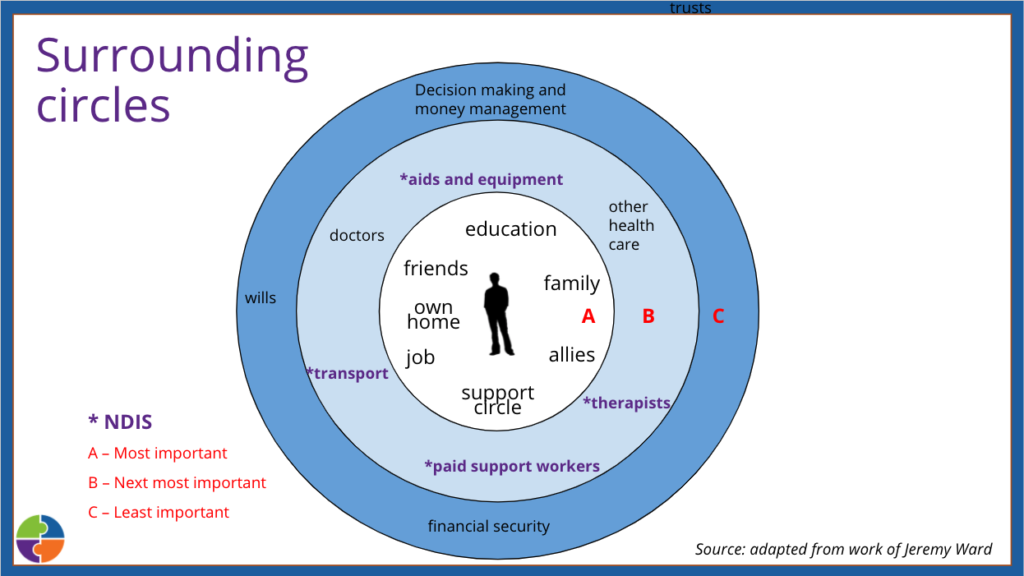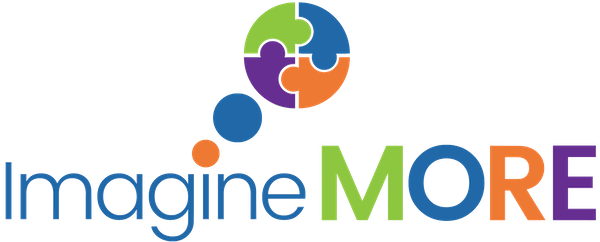Establishing the Right Support
Session Recording
This is an edited recording of Session 5.
Session Summary
We started this session by talking about the support circles around a person. The following diagram shows these by the level of importance and we can see that the more we rely on the inner circle the less we rely on those items in the outer circles.

The ultimate goal of any good support is to:
- Be a bridge to relationships
- Promote capacity building
To facilitate this we talked about starting with what is the valued role the person is pursuing and identifying the complementary support role based on the goals of the individual being supported.
When we are looking for a support person we can first look for natural support. Natural supports can be family and friends but they don’t always have to be. Perhaps you could look to
- the workplace for support in a work role
- a local club for support pursuing an interest
- your local community where there may be people with shared interests etc.
Matching well can ensure that there is mutual benefit to both parties. We must still ensure this person fits the criteria we have outlined for the specific role we are looking to fill to make a good match.
If we are unable to find natural support we can look for paid support. You can find a number of resources on roles-based recruitment on the Imagine More Website. These are especially helpful if you are able to directly recruit, however, the process for finding the right support person through listing desired criteria is still the same if you are using an agency to fill the role.
Ensuring the support person is well informed about their role and setting up a good communication system is also important. There are, of course, lots of places to look for training to upskill support staff. Some good starting points include John Armstrong’s Support Staff Training and Imagine More’s events and resource pages.
If you would like additional copies of the workbook you can download it below:
